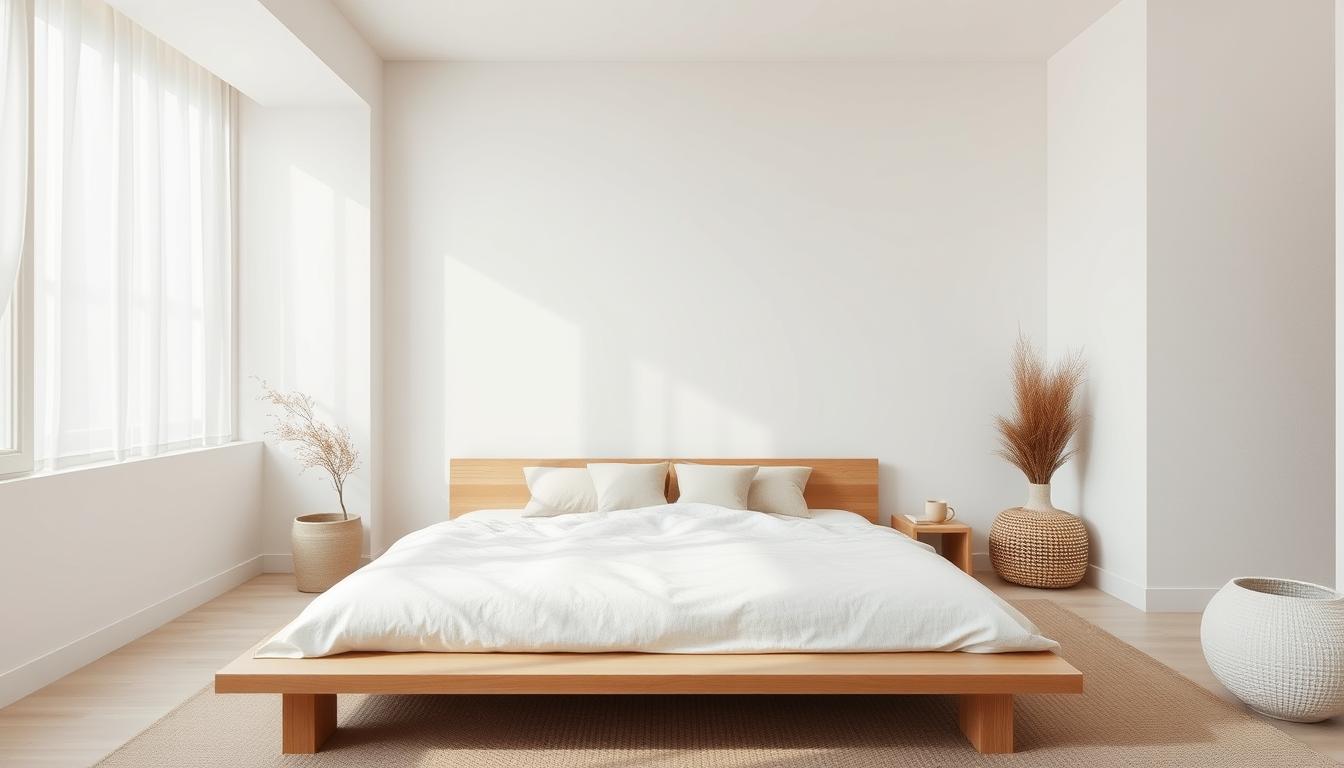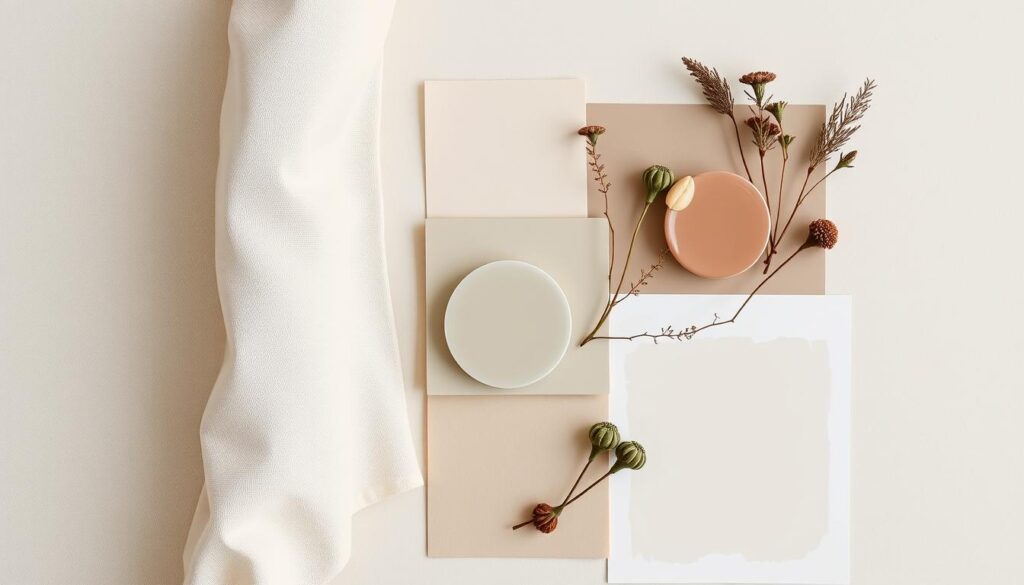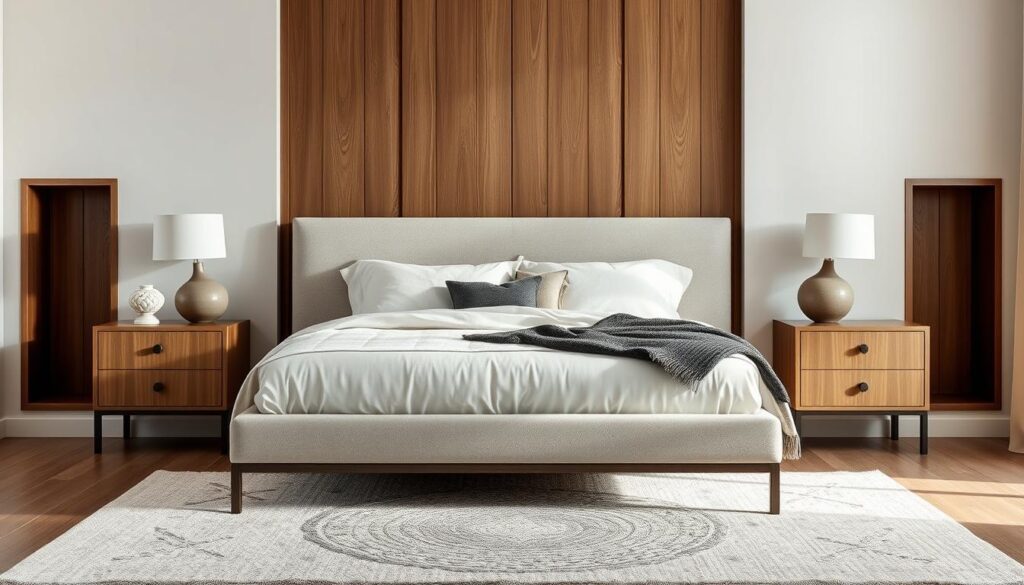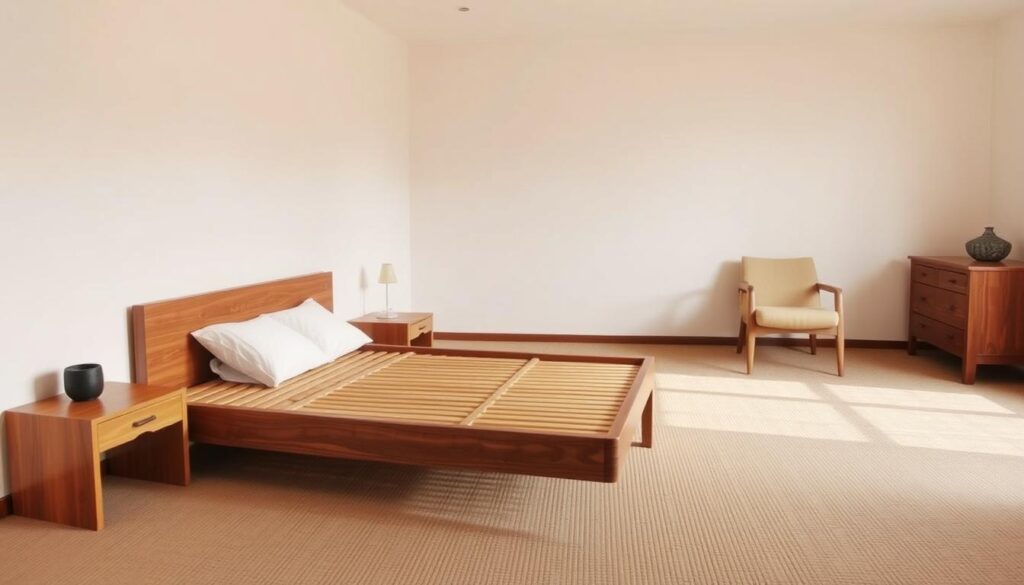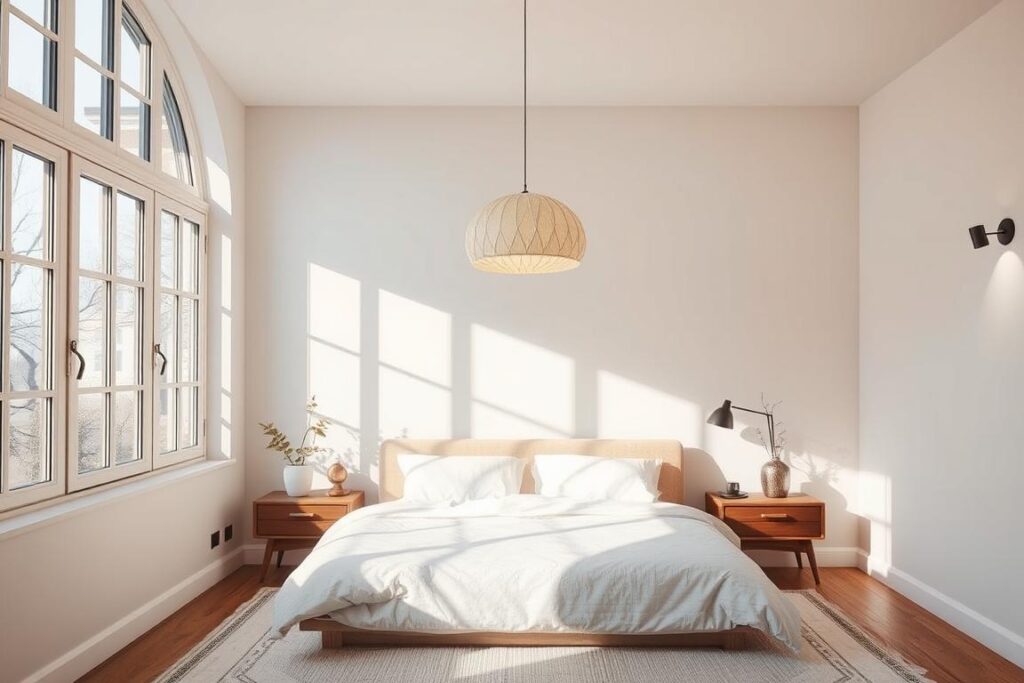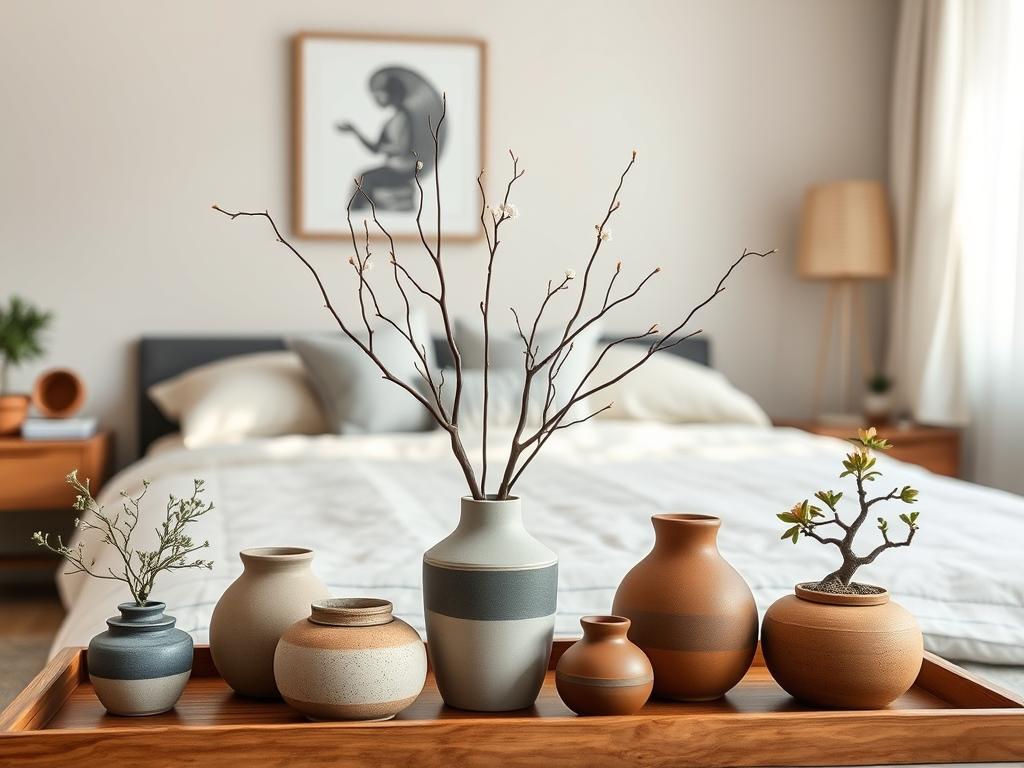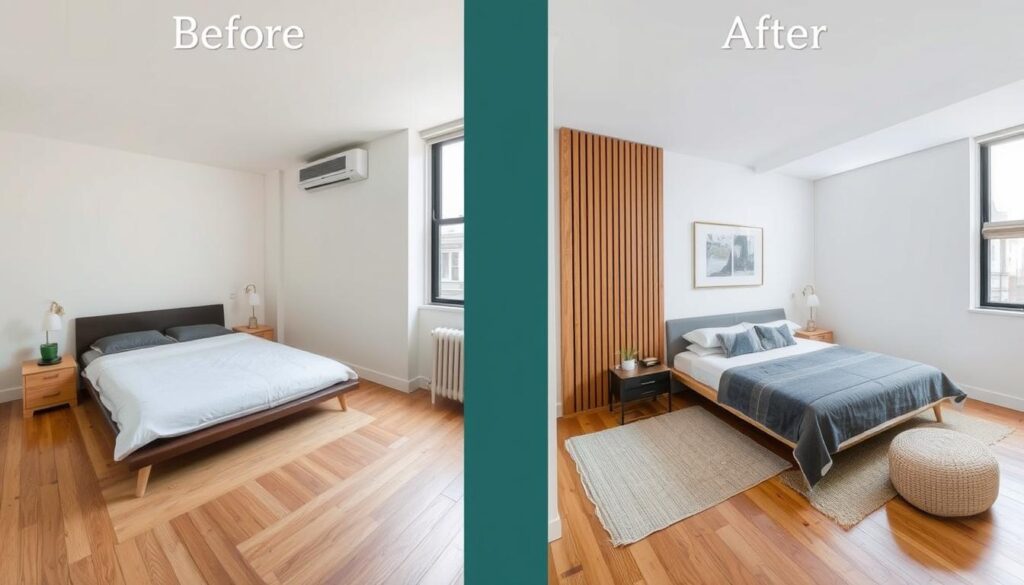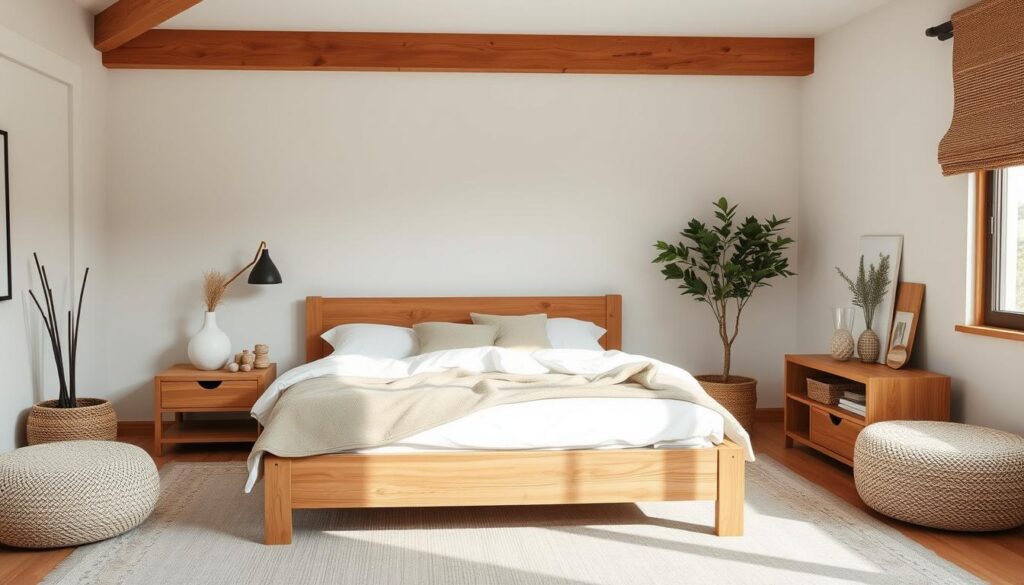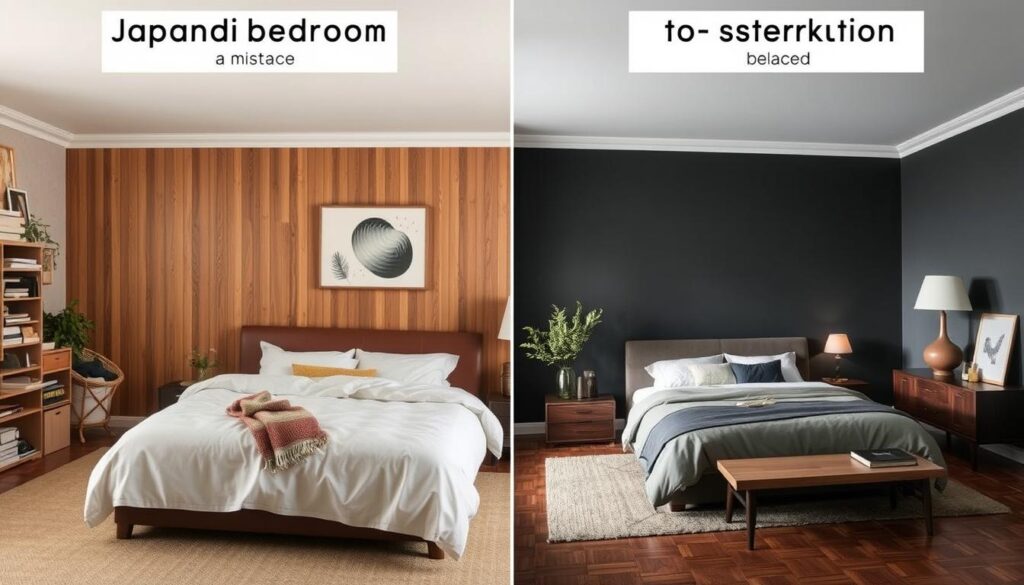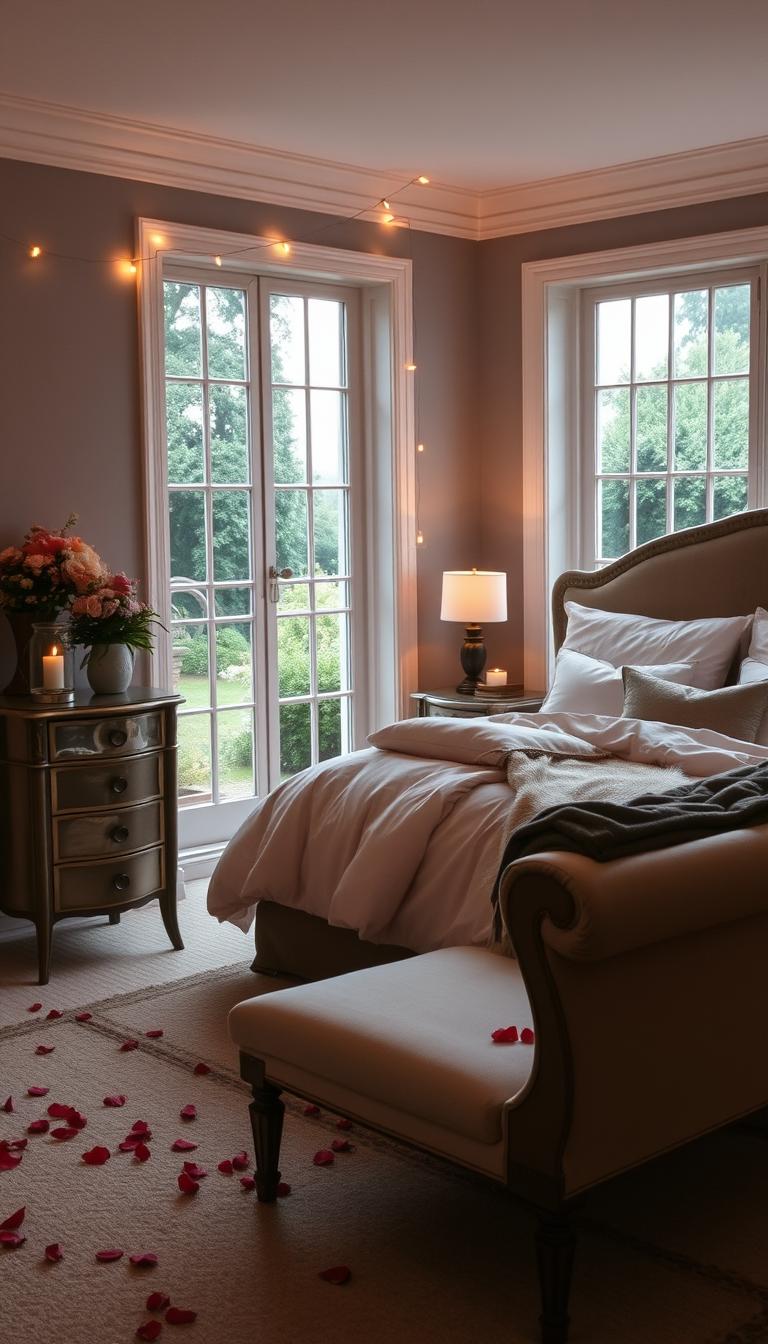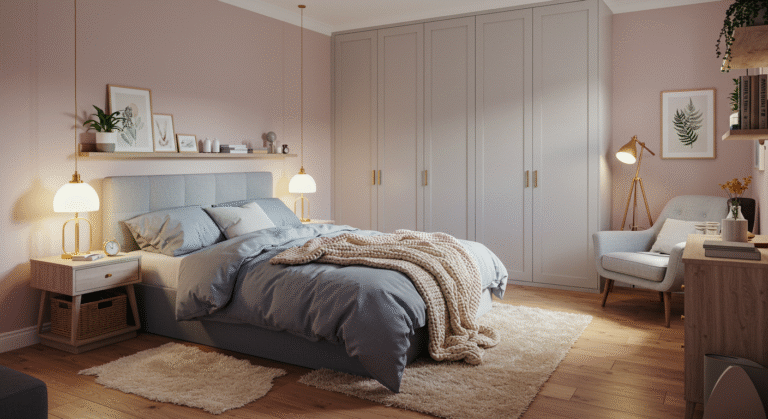How to Create a Serene Japandi Bedroom: Blending Japanese Minimalism and Scandinavian Comfort
Your bedroom should be a sanctuary where you can fully relax and recharge. If you’re drawn to clean lines, natural materials, and a calming aesthetic, the Japandi style might be perfect for your space. This design philosophy combines the best of Japanese wabi-sabi (finding beauty in imperfection) and Scandinavian hygge (creating cozy contentment), resulting in spaces that are both functional and deeply peaceful. Let’s explore how to transform your bedroom into a serene Japandi retreat that nurtures both body and mind.
Understanding the Japandi Aesthetic
The Japandi trend isn’t just another fleeting Pinterest sensation. Both Japanese and Scandinavian design traditions have stood the test of time, with principles dating back centuries. What makes this fusion so compelling is how these seemingly different styles share core values: respect for craftsmanship, connection to nature, and the pursuit of simplicity.
While Japanese design embraces the concept of wabi-sabi—finding beauty in imperfection and transience—Scandinavian design celebrates hygge, the feeling of contentment and coziness. Together, they create spaces that are minimalist yet warm, functional yet soulful.
In a Japandi bedroom, you’ll find a harmonious balance between clean architectural lines and soft, inviting textures. The result is a space that feels both grounded and uplifting—perfect for beginning and ending your day in a state of calm awareness.
Key Elements of a Japandi Bedroom
Neutral Color Palettes with Organic Accents
The foundation of any Japandi bedroom is a soothing, neutral color palette. While Scandinavian design typically favors bright whites and light grays, Japandi incorporates warmer neutrals and deeper earth tones inspired by Japanese aesthetics. Think soft creams, warm beiges, gentle grays, and muted browns.
These neutral backgrounds are then subtly enhanced with organic accent colors—moss greens, slate blues, soft terracottas, and dusty roses. Unlike bold color statements found in other design styles, these accents are used sparingly, often through natural elements like plants, ceramics, or textiles.
Want to find your perfect Japandi color palette?
Download our free Japandi Color Guide with 10 designer-curated palettes that capture the essence of Japanese-Scandinavian harmony.
Clean Lines vs. Cozy Textures Balance
The magic of Japandi lies in its ability to balance seemingly opposite elements. Clean, architectural lines provide structure and visual calm, while varied textures add warmth and tactile comfort. This interplay creates spaces that feel both organized and inviting.
While Scandinavian design favors light woods like pine and birch, Japandi incorporates darker Japanese ash and walnut tones for contrast and depth. Furniture pieces typically feature simple, geometric forms with thoughtful details that highlight craftsmanship rather than ornate decoration.
Sustainable Material Choices
Both Japanese and Scandinavian design traditions value natural materials that age beautifully and connect us to the natural world. In a Japandi bedroom, you’ll want to incorporate:
- Wood: From bed frames to nightstands, wood brings warmth and character. Mix lighter and darker tones for visual interest.
- Linen: Breathable, slightly textured linen bedding adds an organic, lived-in elegance.
- Cotton: Natural cotton in throws and cushions provides comfort without synthetic additives.
- Rattan and bamboo: These materials add textural interest through lampshades, baskets, or decorative elements.
- Stone and clay: Ceramic vases, stone trays, or concrete accents add earthy stability.
- Paper: Traditional Japanese paper (washi) can appear in lampshades or wall coverings.
“Less But Better” Furniture Philosophy
The Japandi approach to furnishing embraces the principle of “less but better”—choosing fewer, higher-quality pieces that serve both functional and aesthetic purposes. This philosophy reduces visual noise while elevating the overall experience of the space.
In a Japandi bedroom, you might include only a bed frame, one or two nightstands, perhaps a bench or chair, and minimal storage. Each piece should earn its place through both beauty and utility. This intentional restraint creates room to breathe, allowing both the space and your mind to feel less cluttered.
Step-by-Step Japandi Bedroom Styling Guide
Layout Principles: Creating Zen-like Flow
The foundation of a serene Japandi bedroom begins with thoughtful space planning. Start by positioning your bed as the focal point, ideally facing the door but not directly in line with it (following feng shui principles). Ensure pathways around the bed are unobstructed, allowing energy to flow freely throughout the space.
Consider a low-profile bed frame—a signature element in Japandi bedrooms. These frames, sitting closer to the ground, create a grounding effect while making the ceiling appear higher, enhancing the sense of spaciousness.
Incorporate functional storage that doesn’t overwhelm the space. Built-in solutions or furniture with clean lines help maintain the minimalist aesthetic while keeping essentials organized and out of sight.
“In my clients’ Japandi bedroom renovation, we replaced a bulky bedroom set with a low platform bed and wall-mounted nightstands. The room instantly felt twice as large, and they report sleeping more soundly in the simplified space.”
Lighting Strategies: Layered Illumination
Lighting plays a crucial role in creating the serene atmosphere of a Japandi bedroom. Start by maximizing natural light—opt for simple window treatments that can be fully opened during the day and closed for privacy at night.
Layer your artificial lighting with a mix of sources:
- Ambient lighting: Recessed ceiling fixtures or a simple overhead light with a paper or linen shade
- Task lighting: Minimalist reading lamps or wall sconces beside the bed
- Accent lighting: Soft floor lamps in corners or gentle LED strips behind headboards
While Scandinavian design often features metallic light fixtures, Japandi tends toward natural materials like paper, wood, or bamboo that diffuse light gently. Paper lanterns or pendants inspired by traditional Japanese akari lamps are perfect choices that create a soft, flattering glow.
Textile Combinations: Organic Comfort
Textiles are where the hygge aspect of Scandinavian design truly shines in a Japandi bedroom. Start with high-quality linen or cotton bedding in neutral tones—whites, oatmeals, or soft grays provide a clean foundation.
Layer with purpose, adding textural interest through:
- A lightweight quilt or duvet in a complementary neutral
- A chunky knit throw at the foot of the bed
- Two to four cushions in varied textures but harmonious colors
- A natural fiber rug (wool, jute, or cotton) to anchor the space
Unlike purely Scandinavian spaces that might feature bold patterns, Japandi textiles tend toward solid colors or subtle, nature-inspired patterns. When incorporating patterns, choose organic motifs like gentle waves, abstract landscapes, or simplified botanical forms.
Decorative Accents: Mindful Minimalism
In Japandi design, decorative elements are chosen with intention, following the Japanese concept of “ma”—the appreciation of negative space. Rather than filling every surface, select a few meaningful pieces that bring joy or serve a purpose.
Consider these thoughtful accents:
- A simple ikebana flower arrangement in a handmade ceramic vase
- One piece of statement art with a nature theme or abstract composition
- A small collection of ceramics in varied heights and textures
- A single bonsai or easy-care plant like a snake plant or ZZ plant
- Natural elements like a smooth stone, dried branch, or wooden sculpture
Wall treatments in Japandi bedrooms often feature natural materials like wood slat panels, textured plaster, or grass cloth wallpaper. These add warmth and acoustic comfort while maintaining the minimalist aesthetic.
Real-World Japandi Bedroom Examples
Example 1: Urban Apartment Transformation
In this 450-square-foot New York apartment, designer Maya Lin transformed a cramped bedroom into a serene retreat. The key changes included:
- Replacing a bulky bed frame with a low, platform style in light oak
- Installing a vertical wood slat feature wall behind the bed
- Removing excess furniture, keeping only a single nightstand and floor lamp
- Adding linen bedding in oatmeal tones with a single indigo accent pillow
- Incorporating a paper pendant light that casts gentle, diffused illumination
The result is a space that feels twice as large and infinitely more peaceful, proving that Japandi principles work especially well in smaller urban dwellings.
Example 2: Suburban Family Home
The Andersons wanted their suburban home’s master bedroom to feel like a sanctuary while remaining practical for family life with young children. Their Japandi-inspired solution included:
- A medium-height wooden bed frame in walnut, offering storage underneath
- Built-in nightstands with hidden charging stations for practicality
- Washable linen bedding in warm gray with terracotta accents
- A wool rug that’s both beautiful and durable
- Blackout curtains in natural fibers for better sleep
- A single large-scale photograph of a forest landscape
This approach demonstrates how Japandi can be adapted for family living without sacrificing style or serenity.
Example 3: Rural Retreat
In this countryside home, the owners wanted their bedroom to feel connected to the surrounding landscape. Their Japandi approach included:
- Floor-to-ceiling windows with minimal frames to showcase forest views
- A bed positioned to face the sunrise
- Locally sourced maple for the custom bed frame and floating shelves
- Handwoven textiles in colors that echo the landscape—moss greens, bark browns, and stone grays
- Ceramic vessels made by local artisans
- A statement pendant light crafted from woven bamboo
This example shows how Japandi principles can be adapted to embrace local materials and surroundings while maintaining the core aesthetic.
Budget-Friendly Japandi Bedroom Tips
Creating a Japandi bedroom doesn’t require a complete renovation or luxury budget. The philosophy actually aligns well with mindful consumption and investment in fewer, better things. Here’s how to achieve the look without overspending:
High-Investment Pieces
- Bed frame: Invest in a quality wooden platform bed that will last for years
- Mattress: Never compromise on sleep quality
- Lighting: One statement paper pendant or quality floor lamp
Save or DIY
- Nightstands: Refinish vintage finds in wood tones that complement your bed
- Wall treatments: DIY wood slat walls using affordable lumber and stain
- Art: Frame nature photographs you’ve taken yourself
Look for sales on high-quality linen bedding or consider cotton alternatives that offer a similar aesthetic at a lower price point. Thrift stores and estate sales can be excellent sources for ceramic vessels, wooden objects, and even furniture that can be refinished to suit your space.
Remember that Japandi embraces imperfection and patina, so don’t overlook items that show a bit of age or character—these often add authenticity to your space at a fraction of the cost of new items.
Need more budget-friendly Japandi ideas?
Join our newsletter for monthly DIY projects, affordable shopping guides, and exclusive discounts on Japandi-inspired home goods.
Common Japandi Bedroom Mistakes to Avoid
Over-Cluttering
The most common mistake in attempting Japandi style is including too many decorative elements. Remember that negative space is an essential component of the aesthetic. Limit yourself to a few meaningful pieces rather than filling every surface.
Mismatched Scales
Furniture that’s too large or too small for your space disrupts the harmonious feel. Measure carefully and consider the proportions of each piece in relation to the room and to each other. A low bed frame needs proportionally scaled nightstands.
Going Too Stark
While minimalism is key, going too far creates a cold, unwelcoming atmosphere. Balance clean lines with soft textiles and warm wood tones. The goal is serene simplicity, not austere emptiness.
Ignoring Functionality
Beautiful but impractical spaces contradict the Japandi philosophy. Ensure your bedroom meets your daily needs with adequate storage, comfortable bedding, and appropriate lighting for reading or other activities.
Forcing Perfection
The wabi-sabi aspect of Japandi embraces natural imperfections. Avoid overly perfect, showroom-like arrangements. Allow for some organic variation in textures, materials, and arrangements.
Overlooking Quality
While budget constraints are real, investing in the best quality you can afford for key pieces aligns with the “less but better” philosophy and ultimately creates a more authentic and lasting Japandi space.
Creating Your Sustainable Japandi Sanctuary
The beauty of Japandi design extends beyond aesthetics—it embraces a mindful approach to consumption and living that feels increasingly relevant in our fast-paced world. By choosing quality over quantity, natural materials over synthetic ones, and timeless design over fleeting trends, you’re creating not just a beautiful bedroom but a more sustainable home.
As you implement these Japandi principles, remember that the goal isn’t perfection but harmony—between form and function, aesthetics and comfort, tradition and modernity. Your bedroom should reflect your personal needs while providing a serene backdrop for rest and renewal.
Start with small changes if a complete transformation feels overwhelming. Perhaps begin with decluttering, then add a key piece of wooden furniture, followed by natural textiles. Over time, these thoughtful adjustments will create a space that feels both grounded and uplifting—a true sanctuary for mind and body.
Ready to transform your bedroom?
Download our complete Japandi Bedroom Design Guide with printable checklists, material guides, and exclusive discount codes from our favorite sustainable home brands.

